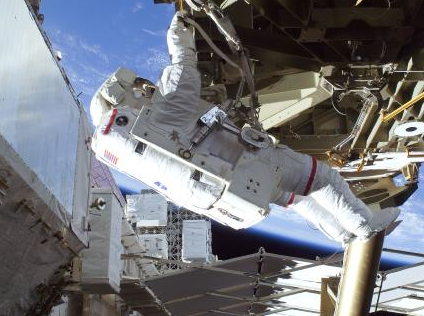OSU ""Space Cowboys"" to go weightless at NASA
Tuesday, December 14, 2010

“To have the opportunity to conduct our experiments and fly ‘weightless’ like the astronauts is like a dream come true,” said Nevels, a senior from Claremore. “We’re excited to find out we’ve been selected for the program that was very competitive this year because there will be only one week of these particular flights.”
Scientists and engineers with NASA’s Microgravity University selected the OSU team, called the “Space Cowboys,” as one of just 10 teams chosen from about 75 entries, said team mentor Dr. Jamey Jacob, professor of aerospace engineering at OSU.
“It's a terrific opportunity and a testament to our students’ ability to put together a proposal and show NASA they have the right stuff,” said Jacob, who explained that the students will test an inflatable system planned for space station deployment that could ultimately reduce the side-effects of various gravitational changes on astronauts.
“The idea is to use a rotating inflatable system to generate artificial gravity for the astronauts so they won’t experience as much bone and muscle loss as they would if they were floating in the weightlessness of the space station,” added Nevels. “Our team will be testing the inflation dynamics of the system and experiment with different rotation speeds to determine the best speed for the desired level of artificial gravity.”
Before the actual flights, their NASA schedule requires students to undergo training sessions in a high altitude chamber to help prepare them for the rides in the aircraft that has been dubbed the “Vomit Comet” due to the reaction of some passengers to the various levels of gravity they experience as the aircraft performs specific maneuvers.
The reduced gravity aircraft usually leaves Houston to fly a series of maneuvers over the Gulf of Mexico in a parabolic pattern that provides several 25 second periods of microgravity (0G), according to the NASA website.
In addition to Nevels, OSU team members include Chad Harland, senior, Guymon; Dillon Nelson, senior, Watonga; David Grismore, senior, Bartlesville; Shea Fehrenbach, sophomore, Piedmont; Zach Barbeau, sophomore, The Woodlands, Texas; Ryan Jenkinson, junior, Bartlesville; Timmy Seitz, junior, Tulsa; Clint Reitz, senior, Kingfisher; and Zack Deck, senior, Midland, Texas.
The team receives no funding from NASA for their expenses. They are supported in part by the Oklahoma Space Grant Consortium, the School of Mechanical and Aerospace Engineering, and the College of Engineering, Architecture and Technology, as well as private donors.
